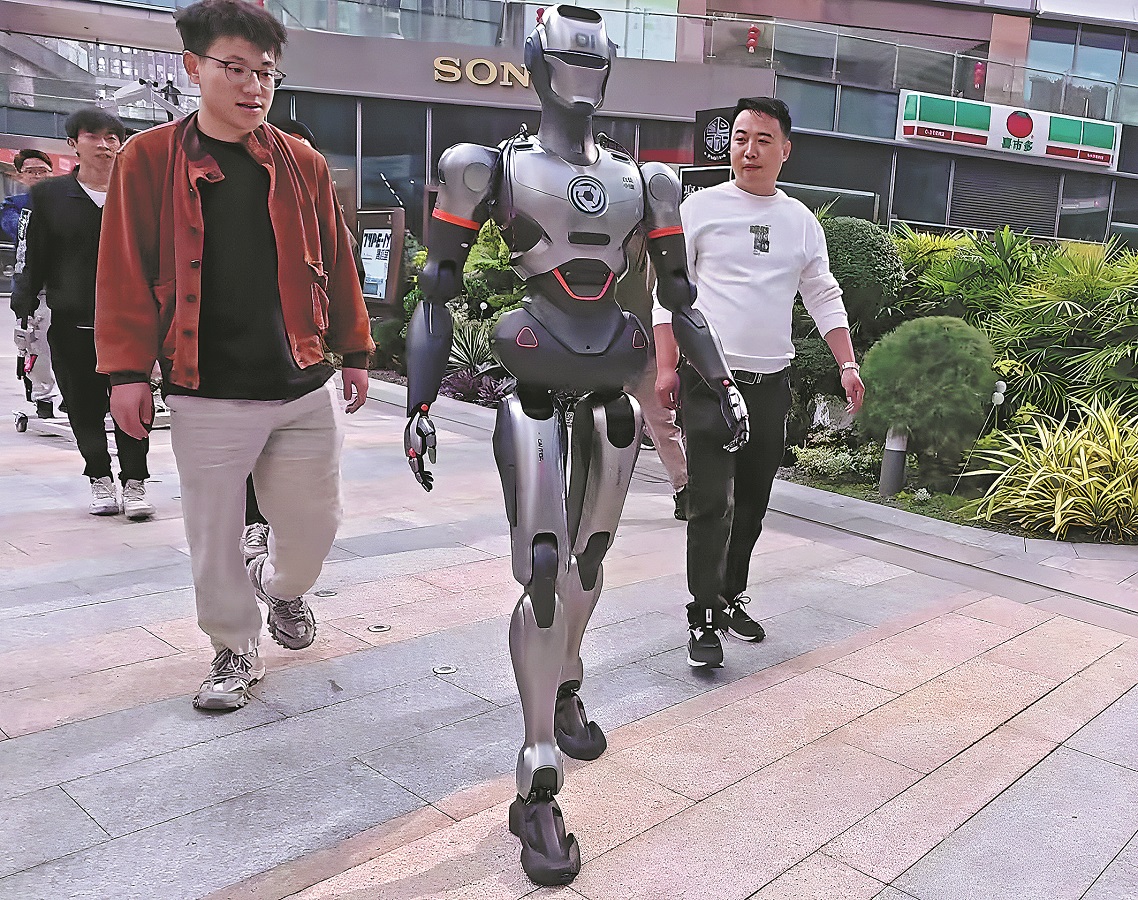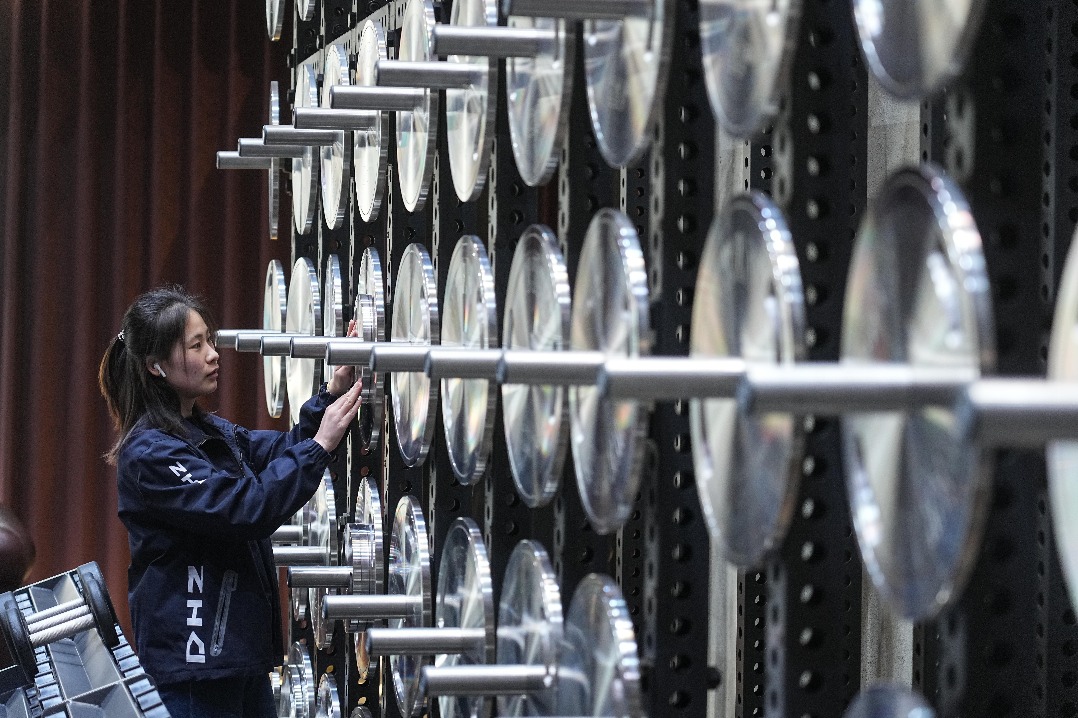Robots take giant leap from stiff to smooth


If you thought humanoid robots all have stiff, unnatural movements, it's time to take another look. A company in Shenzhen has taken a giant leap forward, perfecting robots capable of the smooth, organic movements of real people.
EngineAI Robotics Technology captured the public's imagination recently with a viral video showcasing the natural walking gait and balance of its latest robot — designated the SE01 — which moves with a fluidity and stability that closely matches that of a human. It's smoother by far than any of its predecessors, including C-3PO of Star Wars fame, which is just plain clunky by comparison.
The new humanoid from Shenzhen may not be Michael Jackson when it comes to dancing — at least not yet. But it has ignited discussions about the potential for robots to become part of everyday life, from doing household chores to industrial tasks.
Zhao Tongyang, founder and chairman of EngineAI Robotics, said he believes "that humanoid robots will undoubtedly enter households within the next 10 years, but now it is similar to the early days of smartphones, where constant iterations are needed so the performance and cost-effectiveness will continue to improve".
Standing 170 cm tall, the SE01 humanoid robot resembles an adult in size and weight, and it's equipped with an end-to-end neural network and integrated harmonic joint modules. It is primarily designed for home companionship and industrial applications such as assembly line work or as an aid to developing real-world manual procedures for factories.
Yao Aiwen, chief marketing officer of EngineAI Robotics, said a surprising aspect of the robot is its low cost — below 100,000 yuan ($13,720). The retail price is 88,000 yuan for early birds and will be back to 188,000 yuan after March, Yao said. The cost of most humanoid robots exceeds $100,000.
Yao said the technology of humanoid robots is divided into four categories: the robot's body; its motion control capabilities, which involve running, jumping, arm movement and grabbing — known as the "cerebellum" functions; embodied intelligence, which allows interaction with the environment through vision, hearing and sensory abilities; and the general-purpose brain, which pertains to planning and learning capabilities.
"To become a leading robot company, all four sectors are essential. We have already completed the development of the body and cerebellum and are currently focusing on embodied intelligence," Yao said.
"But for humanoid robots to truly enter households, all four sectors need further iterations and upgrades. In two to three years, when the body, cerebellum and embodied intelligence are all optimized, humanoid robots will have stable performance in practical scenarios."
In fact, the SE01 is not just a technological marvel, but also represents a broader trend in Shenzhen's robotics industry, which has been rapidly developing a robust ecosystem for innovation.
"We are seeing 700 percent year-on-year growth in our overseas business revenue," said Zhang Junbin, founder of Narwal, one of the top 50 robotics companies in China. He attributes the growth to the global appeal of Shenzhen.
The city "boasts a unique combination of talent, investment and manufacturing capabilities, fostering an environment where robotics can thrive", Zhang said.
Zhang's journey began in 2016, when he was inspired by a comment from his mother about the challenges of household cleaning. This led him to create a mopping robot designed to meet the floor cleaning needs of Chinese families. In just a few years, his company had made significant strides, launching products that have set new benchmarks in the robotics market and a sales network now covering more than 30 countries and regions.
"Shenzhen's robotics companies have outstanding innovation capabilities, and investors are very optimistic about the future development of the robotics industry here," said Bi Yalei, secretary-general of the Shenzhen Robotics Association. "The number of financing events in Shenzhen's robotics sector has consistently led the nation, with 51 major investment and financing events in 2023, ranking first in the country."
A white paper on Shenzhen's robotics industry reported that in 2023, the total output value of Shenzhen's robotics industrial chain reached 179.7 billion yuan, an increase of 8.7 percent year-on-year. The number of patent applications and grants in the sector has surged explosively over the last decade, with patent grants in 2023 increasing approximately 4.7 times over 2015. More than 10,000 new companies have registered.
Global hub
As the robotics industry in Shenzhen continues to grow, the city has become a significant hub for the global humanoid robot supply chain, with its robust industrial system, a solid manufacturing foundation and a wealth of application scenarios, particularly with unique advantages in the new direction of embodied intelligence, the white paper said.
In April 2024, Guangdong's Embodied AI Robot Innovation Center was launched in Shenzhen. According to Ding Ning, the head of the center, the focus on embodied intelligence should not be limited to humanoid robots, but should also enable continuous breakthroughs in robotics generally to create and use more tools to enhance robots' work capabilities and efficiency.
The manual dexterity of robots is one of their most important features. In a speech at the Shenzhen Intelligent Robot Dexterous Hand Industry Development Conference in August, Shenzhen's mayor, Qin Weizhong, said, "Dexterous hands are the culmination of cutting-edge technologies such as deep bionics, soft perception, micro-electromechanical systems and high-performance materials, making them key to the transformation of intelligent robotics technology."
Yao, of EngineAI Robotics, said: "The potential applications for humanoid robots are becoming increasingly diverse. From serving as companions in homes to performing complex tasks in factories, these robots are poised to change the way we live and work. I see a future where these robots can assist with everyday tasks, enhancing productivity while also enriching human interactions."





































